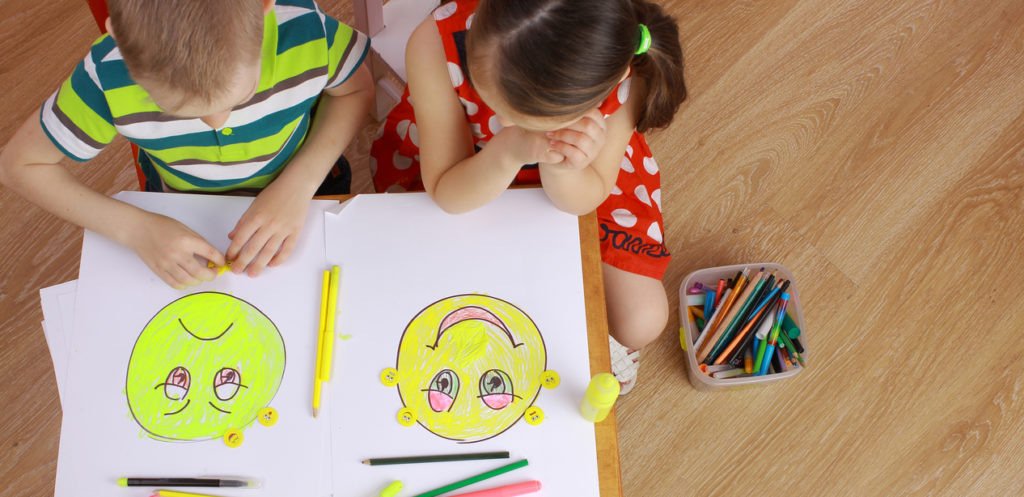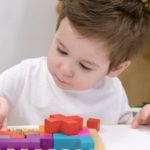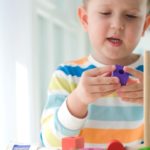Babies’ senses and skills start developing the minute they are born. This development also includes emotional development. It grows every day as infants interact with their parents and families. And unlike genetic developments, emotional development needs outside interference. It is very important to play a big role in your child’s emotional growth. Now you might be wondering how to do so? Well, here are some ideas to help your baby’s emotional development.
What is emotional development?
Emotional development starts from birth and till the child hits puberty. The foundation of this development is to identify emotions and feelings and understand them. It also means to know why those emotions happen and how to deal with them. For little children, emotional development starts as little physical feelings. For example, if they are scared, their heartbeats increase or they get a trembling feeling in their tummies.
As children grow, they start to identify their emotions and understand them. They also learn how to deal with them and work through them. And as children become young adults, they start to understand other people’s emotions and feelings. Experts believe that the best approach to emotional development is constant conversation with kids. The more you talk to your children about this, the more they become emotionally mature.
Why is this very important?
Both social and emotional development are very important at the early years of a child’s life. This helps them become successful young adults who are capable of building good relationships with other people. All of this contributes to them becoming good and productive members in society. It reflects greatly on their future and how they establish and maintain good relationships with their family and friends.
Emotional growth makes children more special
How can emotional maturity reflect on children?
- – It helps them make friends easily
- – Makes them good leaders
- – Helps them give good advice to friends
- – They become more into joining clubs and enrolling in extracurricular activities
- – It helps them help peers learn new things
- – They can keep close friends
- – Teaches them to sympathize with others
- – Their peers will love them because they know they can depend on them
- – This maturity encourages them to be active and social
- – It teaches them how to brainstorm and solve problems
- – Emotional maturity helps children express themselves
- – They become capable of having discussions and taking responsibility
- – Finally, it helps them see and understand other people’s emotions
Activities that helps your child’s emotional development at home
1| Revisiting good memories
Having a family gathering to revisit good old memories is one of the best things you can do. It really helps your child grow emotionally. This simple family activity is fun and makes a great bonding activity. Use sentences to show gratitude to help your child learn how to do so. Let your children express their feelings about those memories. They can do so through words, drawings, or making cards.
2| Teach them something new
Engage the whole family in teaching your little child a new thing. For example, you can teach them to fold laundry. Dads can teach them to take out the trash. An older sibling can teach them to color inside the lines. This will help them bond together while also building your little child’s self esteem and confidence. Remember to ask your children what they learned and encourage them to thank those who taught them those new things.
3| Identifying emotions
To help children grow emotionally, we need to help them explore themselves first. We also need to help them identify different emotions and understand them. You can do so through using pictures or movies. For example, if you are watching a movie together, ask your child what the characters feel. Why are they feeling this way? And how did we know they are feeling like that? All of this will teach children different emotions and it will help them tell them apart.
4| Drawing
Whether alone or in a group, drawing contributes a lot to emotional development. Here is a fun drawing idea for a group. Get a piece of paper and ask a group of children to draw one circle together one at a time. The first child will draw part of it, the second will draw another, and so on until the circle is complete. This will help them understand what the person before them had in mind. It will also teach them to understand and respect other people’s opinions. Furthermore, it is a great team activity.
5| Story time
Story time is always fun and educational for little children. It is such an easy activity that you can do while cooking, driving the kids, or simply hanging out at home on a weekend. Also, it helps develop so many skills like language, solving problems, and expressing emotions. You can be the storyteller yourself, or you can turn it into a group activity. How? Start telling the story and let each one of your children continue it. Let everyone have a turn in telling the story till it circles back to you. That is when you can share the moral of the story and have an open discussion with your children about feelings and emotions.
6| Engaging kids in family discussions
Finally, some parents think their kids are too young and inexperienced to be a part of big family discussions. However, including them helps their emotional growth greatly. Not only does it build in their confidence and respect for one another, but it also makes them feel heard and understood. In addition, it gives you a new point of view that can be worth considering before making big decisions.







mumzworld.com
mumzworld.com
Christian Neuman
Deena Percival
The research you’ve done for this post is truly impressive. Well done and thank you!
Thanks for the thoughts you are giving on this weblog. Another thing I want to say is always that getting hold of copies of your credit report in order to examine accuracy of each and every detail could be the first motion you have to perform in fixing credit. You are looking to freshen your credit profile from dangerous details problems that wreck your credit score.
Hi there, You’ve done an excellent job. I will definitely digg it and in my view recommend to my friends. I am sure they’ll be benefited from this website.
I have fun with, lead to I discovered exactly what I used to be having a look for. You have ended my 4 day long hunt! God Bless you man. Have a nice day. Bye
I just like the valuable info you provide for your articles. I?ll bookmark your weblog and test once more right here frequently. I am fairly certain I?ll learn many new stuff right here! Best of luck for the next!
It?s really a great and helpful piece of info. I?m glad that you shared this useful info with us. Please keep us up to date like this. Thank you for sharing.
Thanks for your blog post. The things i would like to add is that laptop or computer memory must be purchased in case your computer cannot cope with what you do with it. One can add two RAM boards of 1GB each, as an example, but not certainly one of 1GB and one having 2GB. One should make sure the maker’s documentation for own PC to ensure what type of memory space is necessary.
WONDERFUL Post.thanks for share..extra wait .. ?
Excellent blog here! Also your web site rather a lot up very fast! What web host are you using? Can I get your associate hyperlink on your host? I wish my site loaded up as quickly as yours lol
One more thing. In my opinion that there are lots of travel insurance web sites of reputable companies than enable you to enter your trip details to get you the prices. You can also purchase this international holiday insurance policy on internet by using your own credit card. All that you should do will be to enter all your travel particulars and you can view the plans side-by-side. You only need to find the program that suits your financial budget and needs and after that use your bank credit card to buy the item. Travel insurance on the internet is a good way to check for a trustworthy company regarding international holiday insurance. Thanks for revealing your ideas.